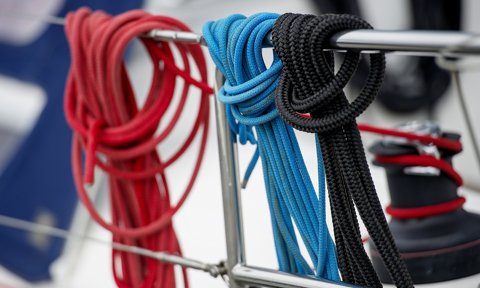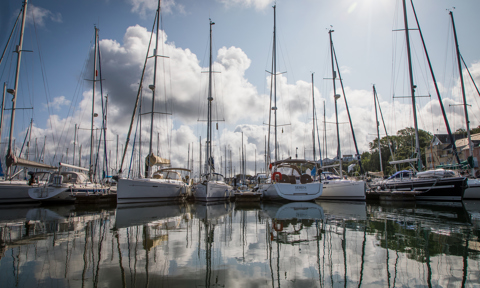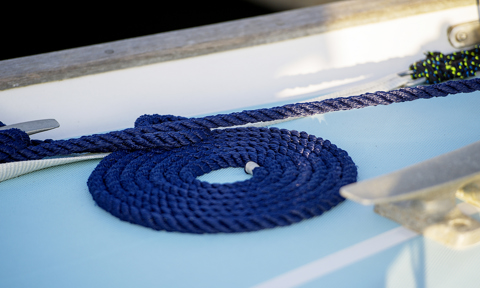We're fortunate to have a naturally well-protected marina here at Plymouth Yacht Haven.
'P' Pontoon provides a strong outer perimeter for the Yacht Haven and lots of new finger pontoons have been installed so we're more than ready for anything the winter throws at us! If you're planning on leaving your boat afloat in a marina over the winter, here are a few tips from our Haven Team that will really help when the wind starts to blow.
1 - One line, one job
Try to avoid the "running W" mooring line (one long line starting at the bow cleat on the finger, to the boat, back to the middle cleat, to the midships cleat on the boat, then to the aft cleat, then finally back to the boat). The "running W" makes it very difficult to adjust lines in a gale. Use separate lines for bow and stern, two long spring lines and, if it makes you rest easier, double-up where you feel necessary. We check boats several times a day during the winter so having your lines like this will allow our Haven Team to make adjustments.
2 - Fendering
If you've got them, use them! We often see boats without enough fenders of the right size, but lots in baskets or lockers. Even if the fender isn't the perfect size for your boat, it is still better to use it rather than letting it collect dust in a locker or in your shed!
As a general rule of thumb, boats should have 1 fender for every 10ft of waterline with a minimum of 3 fenders. Therefore, a 30ft boat should have a minimum of 3 fenders.
In terms of fender sizing, the general advice is that sausage-shaped fenders (cylindrical-shaped) should have 1" of diameter for every 4'-5' of boat length.
3 - Shackles
Avoid using metal shackles straight on to the pontoon cleats. This will only end up with the shackle or the cleat getting broken. Either way, the end result will be the same - your boat not properly attached to the finger.
4 - Avoid short lines
It's best to avoid short. tight lines from midships to the centre finger cleat. The rope will exert big snatch loads. If you have a midships line, ensure it is long enough to stretch to absorb any load.
5 - Line quality
Before you leave your boat for the winter, check the quality of your mooring lines. Damaged ropes will break under heavy loads which will put additional stress on all your good lines. Reduce chafing on your lines by ensuring they go directly from your cleat to the pontoon cleat. You could even pass your rope through a small length of hose to reduce chafing even further.
If your line is damaged, the part of the rope in question can be cut out and you could be left with a useable length of rope. Lastly, don't forget to put any spare lines or rigging that isn't being used away. Sun and saltwater will damage the rope so putting them into a locker will help protect them from the elements.

Annual & Seasonal Berthing
Flexible contracts and attractive berthing solutions. Choose what works for you.

Visitor Berthing
Take a break from cruising and enjoy a relaxing stay and award-winning service.





